The magnificent filigree inlay, representing the pinnacle of precious metal production technology, from the old days dedicated to the court, to nowadays spread to the folk, there has been a lot of people contact, wear filigree inlay products, and for its exquisite and intricate technology by.
What is Filigree Inlay?
Filigree inlay (花丝镶嵌), also known as "fine gold craft", is a long-established traditional Chinese handicraft technique, mainly used in the production of ancient Chinese royal jewelry, by the combination of "filigree" and "inlay" two production techniques.
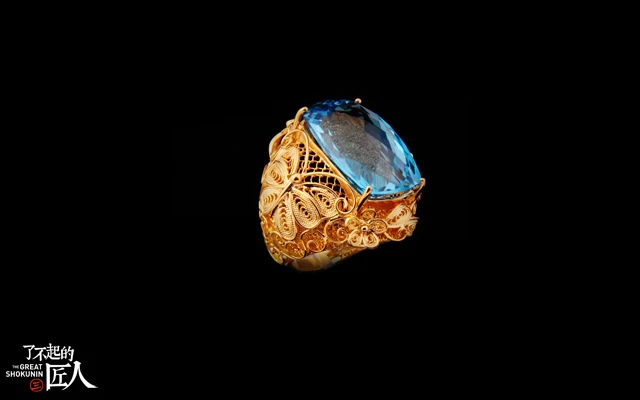
Filigree Inlay Art in THE GREAT SHOKUNIN
- Filigree refers to drawing gold and silver into fine wire, using filling and weaving techniques to make crafts.
- Inlay refers to the hammering of gold and silver flakes into vessels, and then burin out the pattern, set with pearls or gemstones, and become.
As one of the "Eight Unique Skills of Yanjing", the art of filigree mosaic was included in China's national intangible cultural heritage list in June 2008.
The objects that can be applied with filigree inlay can be divided into three categories.
- The first category is jewelry, including bracelets, necklaces, earrings, brooches, pendants, cufflinks, etc.
- The second category is the display category, mainly indoor decorative items, such as hanging scroll, vase, incense burner, architectural decoration, and so on.
- The third category is the practical category, mainly small and medium-sized products, such as cigarette cases, lamp stands, wine sets, makeup boxes, pocket knives, etc.
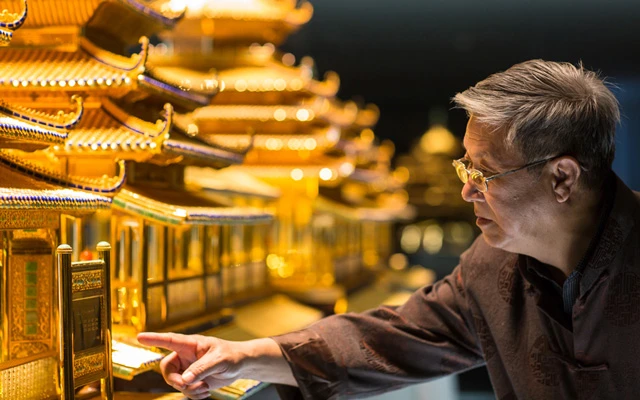
Yao Yingchun, the national inheritor of filigree crafts, views filigree inlay crafts at CHJ Museum of Jewellery in Shantou, Guangdong
History of Filigree Inlay
The filigree inlay craft had a prototype as early as the Spring and Autumn Period, and the "Jin Yin Cuo" of the Warring States Period and the "Jin Yin Ping Tuo" of the Tang Dynasty were its predecessors.
Since the Tang and Song dynasties, filigree techniques were more widely used in women's hairstyles and jewelry.
In the Ming Dynasty, gold, silver, and jewelry were used to make decorative items and household utensils, the quantity was amazingly large and the craftsmanship was superb, and covering the traditional filigree, openwork carving, burin engraving, and inlay techniques.
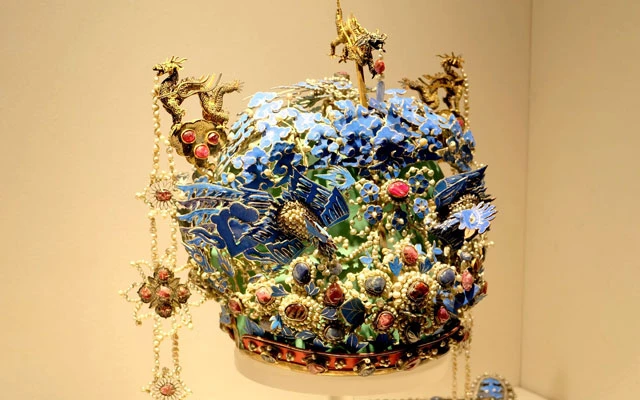
The crown of Empress Xiao Duan, Ming Dynasty
Jewelry themes mainly inherited the secularization style of the Song and Yuan dynasties, dragons and phoenixes, flowers and birds, insects, religion and other major themes.
Luxurious and exquisite varieties are numerous, such as gold silk is woven into the gold crown, phoenix crown, inlaid jade gold flowers jewelry.
For example, the Gold Thread Double-Wing Crown (金丝翼善冠), which was woven by Ming Dynasty craftsmen with ultra-fine gold thread.
The crown is 24 cm high, the crown body is as thin as gauze, the gap is even, the top of the crown has dragon playing pearl pattern, the shape is elaborate, it is a masterpiece of the generation.
The crown is composed of three parts: the Qianwu (前屋), the Houshan (后山) and the folded corner, woven with 518, 334 and more than 70 gold wires of 0.2mm diameter respectively.
The crown is light and thin, and the gold wire is woven evenly and decently without any ends. The two golden dragons are made by stacking the gold wire, which is vivid and majestic, reflecting the advanced welding technology of the maker at that time.
The Steps of the Filigree Inlay Craft
Drawing Wire
The gold and silver bars are pressed on the rolling machine into a square of suitable thickness and placed into a special manual wire drawing plate for drawing, the strength should be moderate, the middle can not be pulled off, the current diameter of the finest filigree up to 0.16 mm.
The wire drawing plate is arranged from coarse to fine with forty to fifty eyelets of different diameters, the eyelets are generally made of alloy and diamond, the smallest hole is thinner than a hair, in the process of pulling the thick wire thin, it must pass through each eyelet in turn from large to small, can not be skipped, sometimes it takes more than ten times to get the required thin wire.
Twisting Wire
The single wire pulled from the wire drawing plate is called "plain wire", and requires two or more strands of wire to be rolled into a variety of patterned wire - this is the name "filigree" comes from, the most common filigree is made of two or three plain wires, which is the simplest and most basic style.
Nipping
Using tweezers or pliers, the filigree is nipping into different patterns. Nipping is the basic skill and the most difficult to master in the filigree inlay process.
Filling
Fill in the outline of the pinched pattern with filigree or plain silk. The filling is the most monotonous and time-consuming process in the filigree inlay craft.
Welding
This is the process of putting the patterns together and fixing them by welding to form a complete piece of jewelry. The welding process is particularly skillful, as a filigree finer than a hair is welded to the object to form the pattern, and the slightest mistake can ruin the work.
Assembling & Mounting
The individual patterns made by different methods are assembled into the required complex patterns, and then these complex patterns are mounted on the mold pattern.
Weaving
Weaving is the same as straw weaving and bamboo weaving, but gold and silver weaving are more difficult, and it requires an experienced artist with even hand strength to weave well.
Enameling
If enamel is required, the enamel is mixed into a "pigment" and then traced bit by bit onto the molded filigree, then fired at 700°C to a glassy texture.
Inlaying
Finally, set with various stones according to the shape of the filigree.
The Inheritance of Filigree Inlay
The filigree inlay craft, which flourished in the Ming and Qing dynasties, was nearly lost due to many changes in the turbulent history, and many young apprentices were discouraged by the complicated techniques.
Fortunately, there are people in the silent persistence, in order to inherit this ancient art, filigree inlay inheritors are also working hard. In addition to guarding the art of filigree, they also make filigree inlay really into the public eye.
Traditional crafts and culture are our unique and splendid heritage, and the filigree mosaic technique is a dazzling jewel in much splendid heritage.
What we need to do is not only to inherit its techniques, but also to innovate and improve and promote them, and to integrate the inherited craft into our life. It is not only an art, but also a spirit that we cannot live without.
More about Traditional Chinese craft:
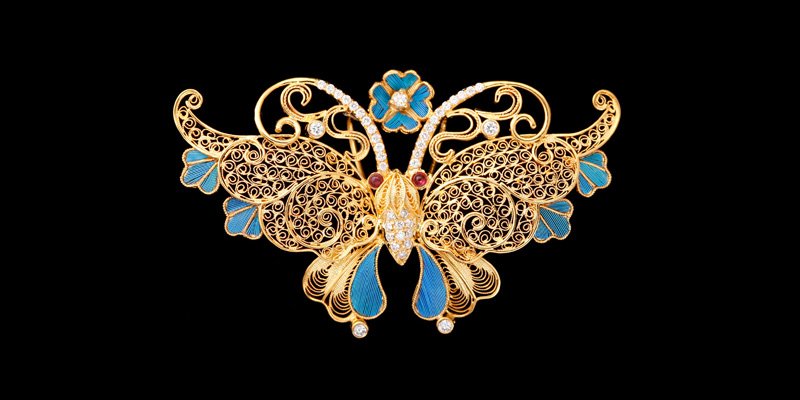
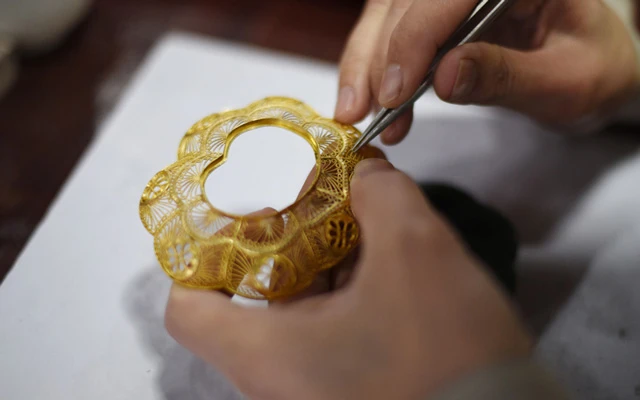
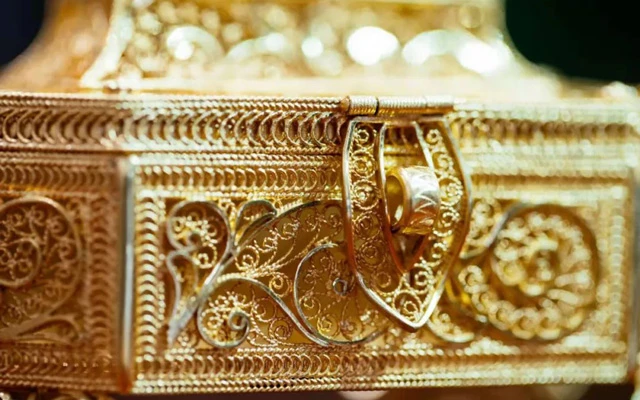
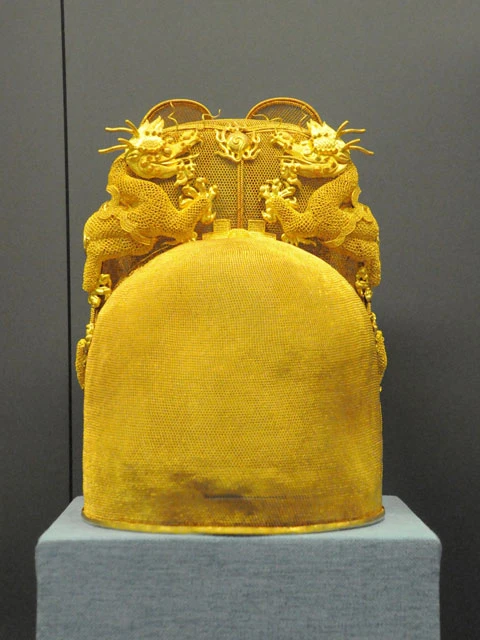
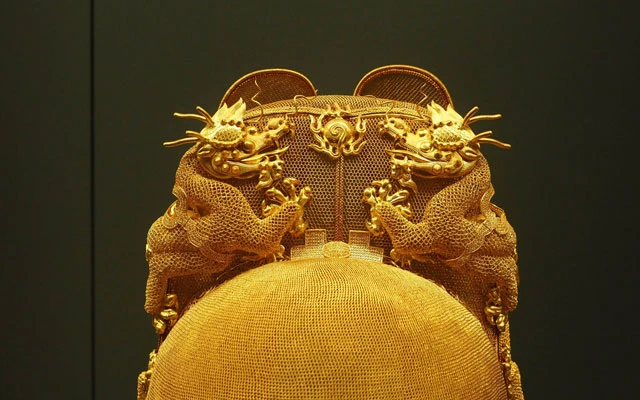
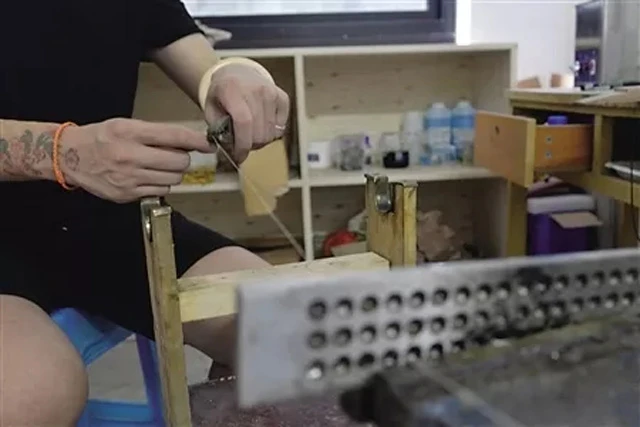
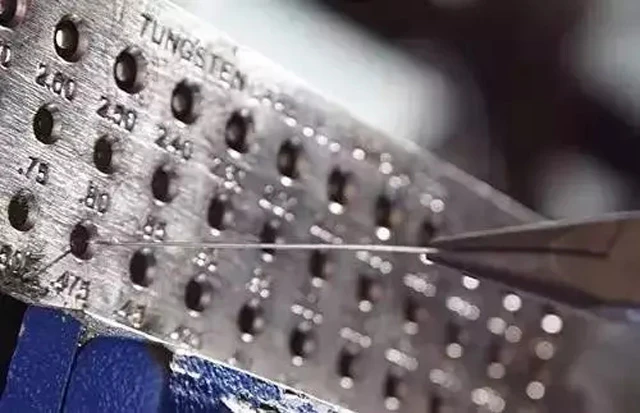
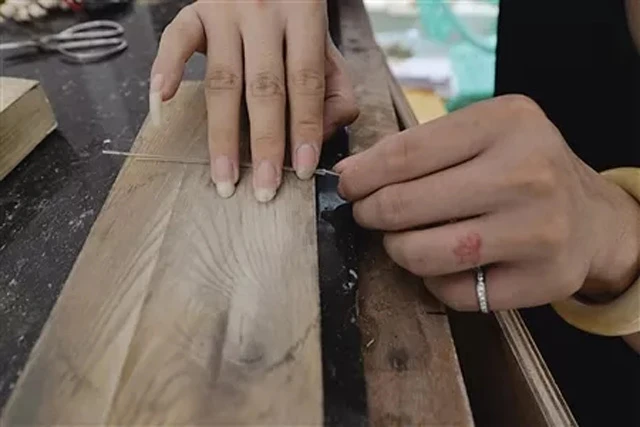
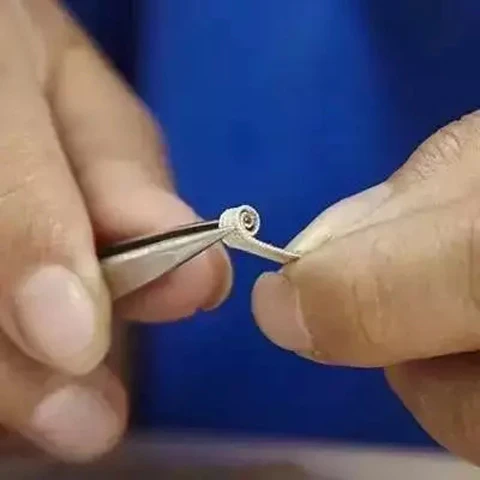
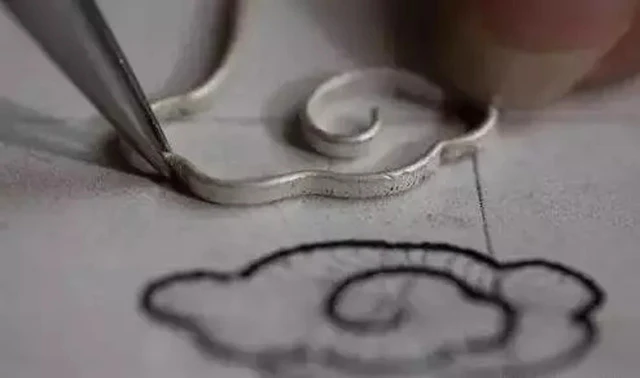
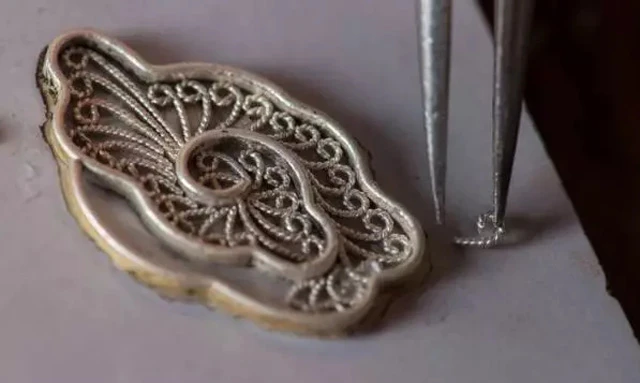
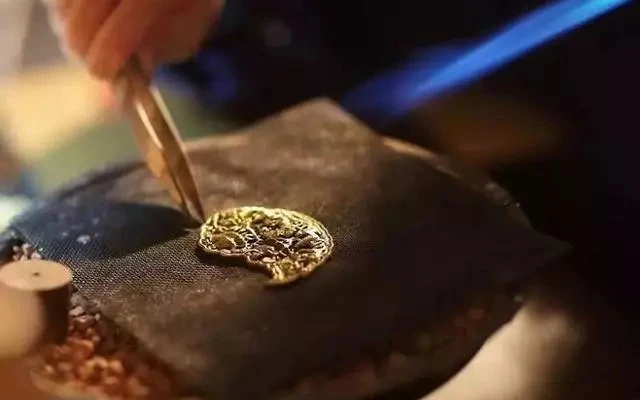
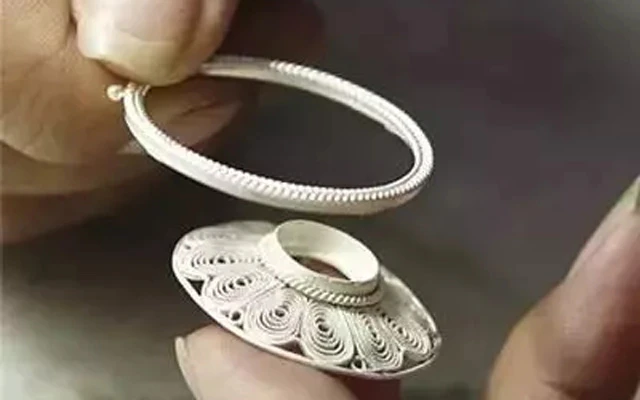
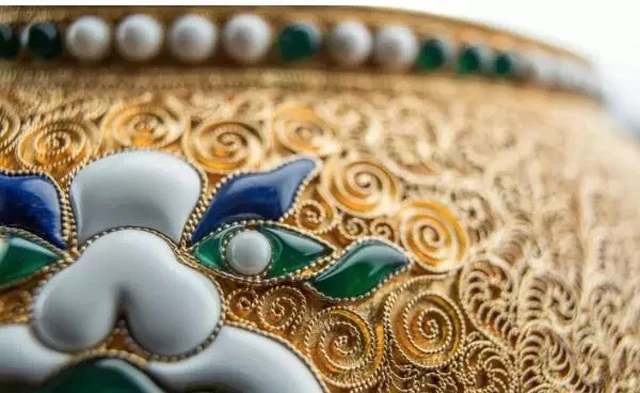
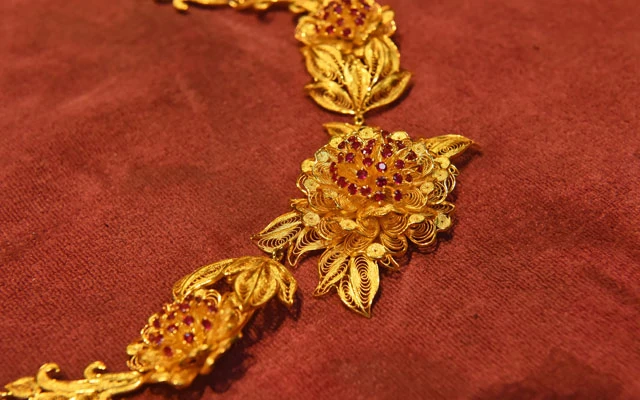
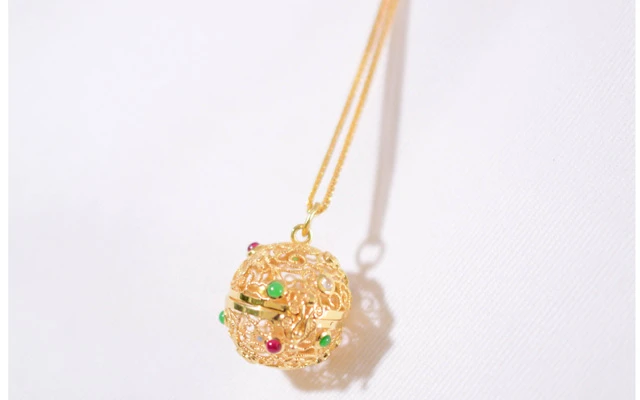

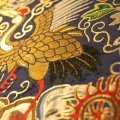

waw! amazing😍
So stunning! o_O
This needs more views, likes, bookmarks, and comments. I truly enjoyed the article.
agree!👊
🤯❤️🔥🔥🔥